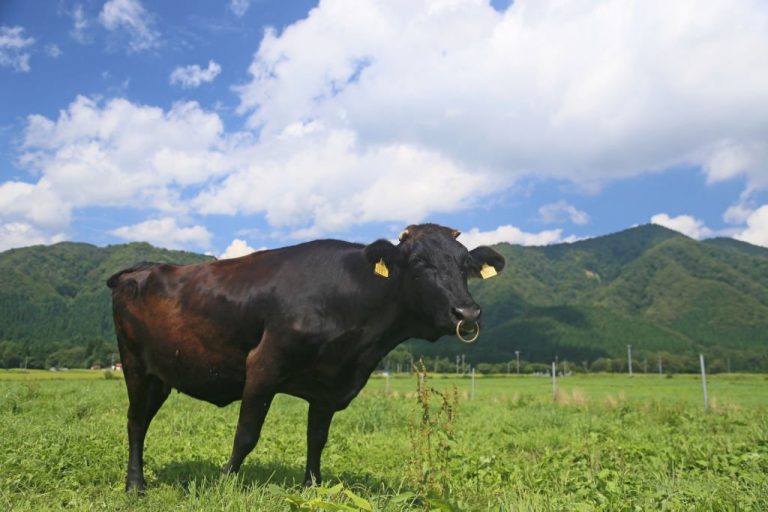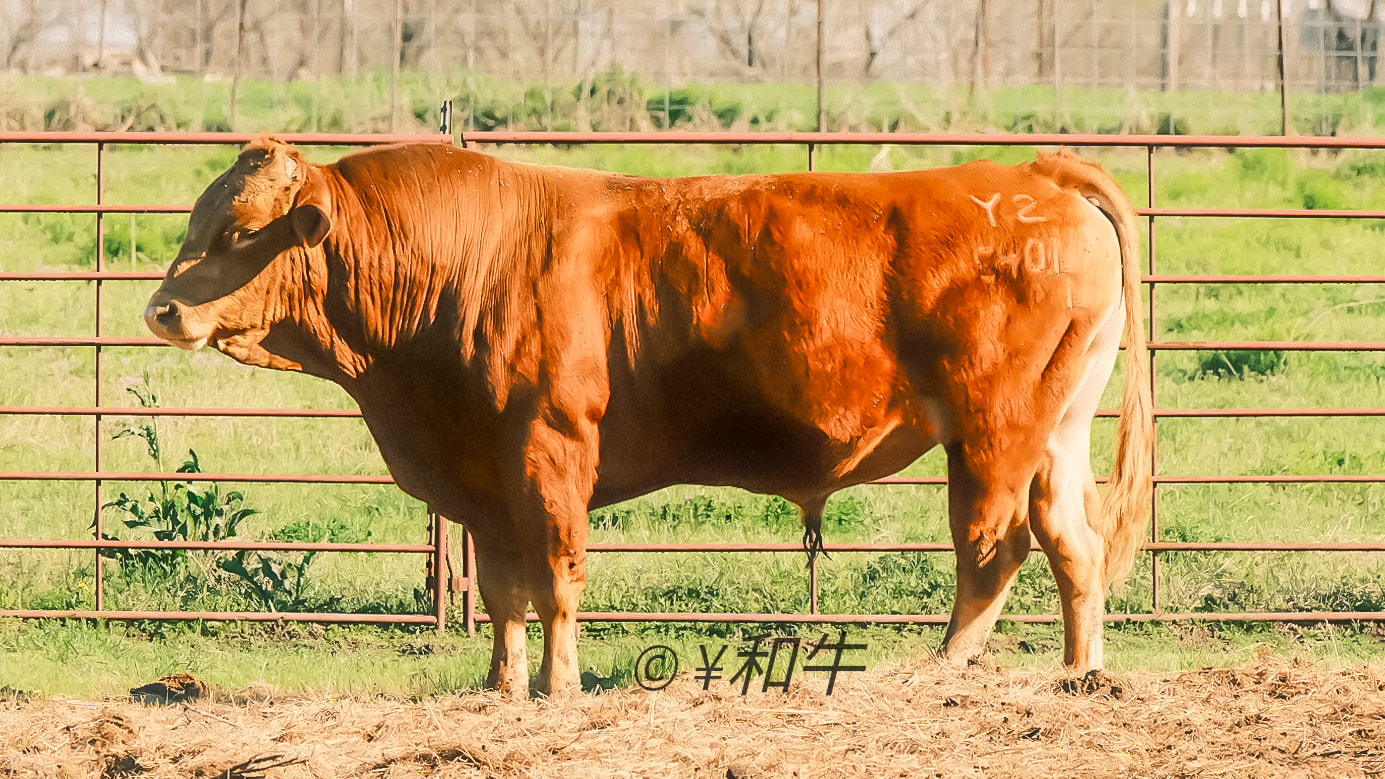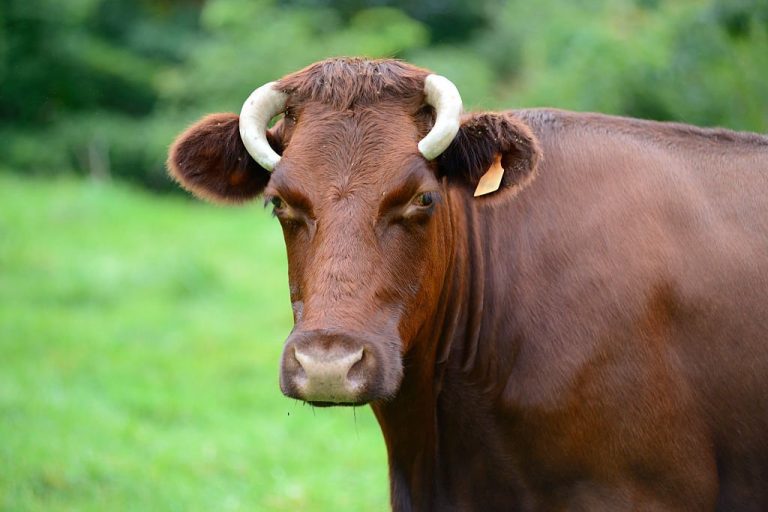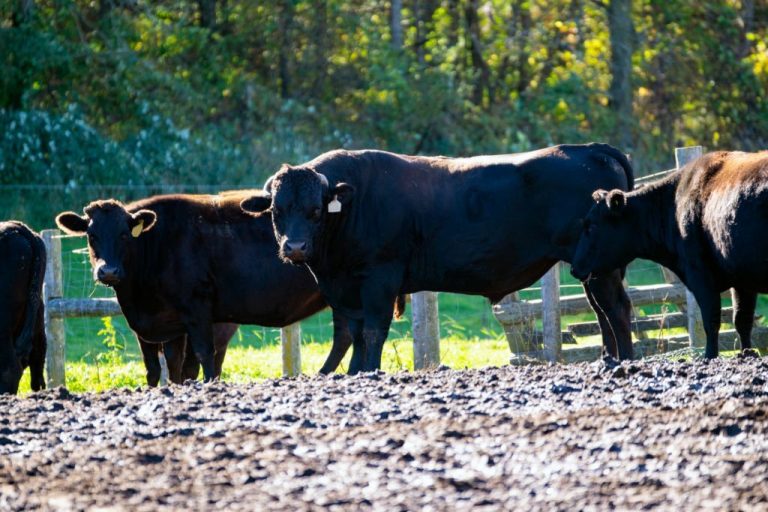The Japanese word “wagyu” (pronounced wah-gyoo) translates to “Japanese cattle” (Wa = Japanese, Gyu = cattle). When these cattle are bred, raised, and fed correctly, they are capable of producing the world’s most tender and marbled beef. These cattle evolved during the Meiji era (1868–1912) when there was an extensive government-led crossbreeding program. To dilute the gene pool and expand the population, native working cattle were crossed with European breeds. Once the initial dilution had occurred, breeders within prefectures (administrative divisions of Japan) began refining their lines without further crossbreeding. The resulting breeds were certified in the mid-1900s and are now sought after worldwide for their immense marbling capabilities. In 1997, the Japanese government also granted wagyu cattle the status of “national treasure” and banned the export of live wagyus to other countries, ensuring that the finest meat remains in Japan.
“Invested time and knowledge to create perfection“
The word “Wagyu” originates from the Japanese language (Wa = Japanese, Gyu = cattle). As Wagyu yields the world’s most expensive meat, it signifies a luxury and quality unmatched by any other. Due to specific genes, this breed of cattle has a higher distribution of intramuscular fat and the typical marbling of meat, which gives it an unparalleled taste. The Wagyu breed has various bloodlines.
Japanese Black Cattle
Japanese Black Cattle were certified as a native Japanese breed in 1944 after crossbreeding native cattle with Brown Swiss, Shorthorn, Devon, Simmental, Ayrshire, and Holstein. Japanese Black Cattle have three main bloodlines grouped by the prefectures where they were bred. Until recently, cattle were only raised within these prefectures, so each prefectural bloodline evolved its own unique set of characteristics.
- The Hyogo Prefecture is known for Tajima or Tajiri bloodline cattle. This group has four bloodlines with slightly different characteristics.
1. The Yasumi Doi line tends to produce very strong marbling and meat flavor. The animals tend to be smaller in size, with narrow hips and shoulders. These animals work well when crossed with larger types of Wagyu to improve marbling and produce good F1 breeding bulls. Japanese exports include: Yasufuku, Kikutsuru Doi TF146, Michifuku, Fukutsuru 068, and Kitakikutsuru Doi ETJ007.
2. The Kikutru Doi line produces good marbling and meat color. The animals tend to be deep and long in body type with narrow hips. They have good maternal traits and produce a good quantity of milk. They mature later. Some animals in this line have temperament issues. Japanese exports include: Kitateruyasu Doi.
3. The Kikuyasu Doi line has shown good marbling formation but variable meat quality. Japanese exports include: Kikuyasu.
4. The Shigekanenami or Kumanami line typically has very good marbling ability and good growth with well-balanced structures. Japanese exports include: Itoshigenami TF148, Okutani, Suzutani, and Rikitani. - The Okayama and Shimane prefectures have two main bloodlines.
1. The Shimomae line animals tend to have large bodies with very good structure, length, and depth. Meat quality is good. Japanese exports include: Dai 6 Seizan ETJ006.
2. The Fujiyoshi line animals have bodies with very good structure, length, and depth. They have very good marbling, mature early, deposit fat well, and are very fertile. Cows in this line produce adequate milk. Japanese exports include: TF Itohana2, Kenhanafuji, TF Kikuhana, TF Itomichi ½, Itoshigefuji TF147, Itozuru Doi TF 151, and Itomoritaka ETJ002. This bloodline includes Ithohana, Kitaguni 7-8, and Kitaguni Jr. - The Tottori Prefecture is known for Kedaka line cattle.
1. Kedaka animals have large bodies and reach moderate to late maturity. They are characterized by good temperament, fertility, and calving ease, and cows produce adequate milk. The carcasses have good marbling, extending to the hindquarters, but tend to have small eye muscles. Japanese exports include: Hirashigetayasu and Shigefuku.
Japanese Brown Cattle
Japanese Brown Cattle, also known as Red Wagyu, received their certification in 1944 after crossbreeding native cattle with Korean Hanwoo, Devon, and Simmental. They are mainly raised in Kumamoto and Kochi prefectures. These cattle typically yield larger carcasses with pleasantly firm texture and tasty intramuscular marbling.
Japanese Shorthorn Cattle
Japanese Shorthorn Cattle are raised in Aomori, Iwate, and Akita prefectures. They were obtained by crossing Nanby cattle with Shorthorn, Devon, and Ayrshire and were confirmed as a local breed in 1957. Their meat is lean and flavorful, similar to other cattle breeds worldwide. Production of this breed sharply declined after the liberalization of beef imports in 1991. The costs of importing similar beef were much lower than raising cattle domestically for beef.
Japanese Polled Cattle
Japanese Polled Cattle originate from Yamaguchi Prefecture, where domestic cattle were crossed with Aberdeen Angus, resulting in polled offspring. This breed constitutes the smallest population of Japanese cattle.

Kuroge (Japanese Black)

Akaushi (Japanese Brown)

Shorthorn (Jaapani lühisarveline)
